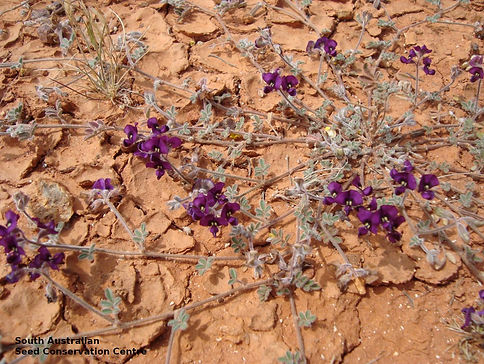THREATS
WHAT CHALLENGES HAVE AUSTRALIAN FAUNA AND FLORA OVERCOME TO SURVIVE AND WHAT DOES THE FUTURE HOLD?
Australia is home to over one million species most of which are found nowhere else around the world. Around 85% of the country’s flora, 84% of mammals, over 45% of birds and 89% of fish are endemic to Australia. Throughout the years, the flora and fauna have been faced with many threats that have challenged their survival.
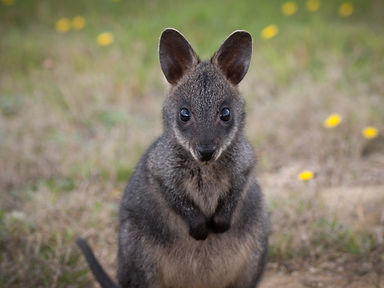
The Lesser Bilby
The lesser bilby was a medium sized marsupial. Its short fur ranged from a pale yellow-brown to a grey-brown colour with white fur on its belly, limbs and tail. Its tail was very long, it was about 70% of its total head-body length.
The Lesser Bilby was omnivorous and its diet consists of bulbs, fruit, seeds, fungi, insects, worms, termites, small lizards and spiders. One of its favourite plant foods was the bush onion and yalka which grow in desert sand plains after fires. Lesser Bilbies didn’t need to drink water regularly because, like the koala, they got most of their moisture from their food.
This made the Lesser Bilby well adapted for survival in the semi- arid and desert areas of Australia.
Lesser Bilbies lived in grasslands and mulga scrublands in the hot, dry, arid and semi-arid areas of Australia. The preferred habitats are mulga and or tussock grass scrublands and
Spinifex grassland. The species was nocturnal and sheltered during the day in a deep burrow dug amongst sand dunes.
Bilbies live in spiralling burrows which they dig up to 2 metres deep. This depth helps to keep them safe from predators and also to keep them at a constant temperature of 23 degrees, as bilbies can become heat stressed. Bilbies may have up to a dozen burrows, one for sleeping in and the others for escaping from predators.
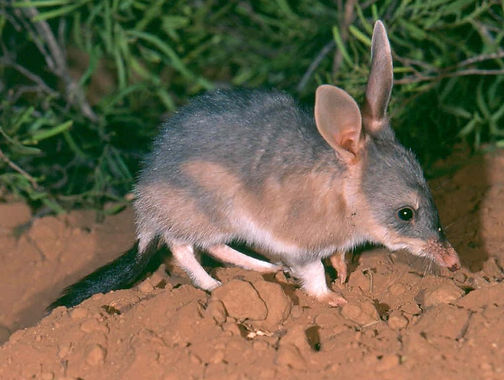
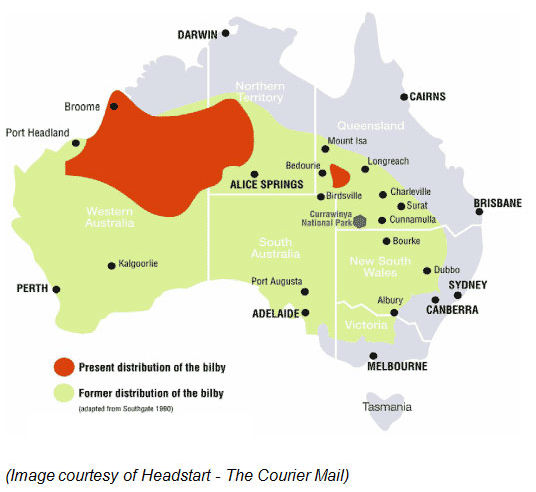
Threats to The Lesser Bilby
The Lesser Bilby was found in large numbers, however, due to the following threats, they have become endangered. Predation
by introduced species such as feral cats and foxes, as well as competing with rabbits for food, were the biggest threats to the Lesser Bilby population. Clearing land for the creation of grazing land for livestock, destroyed the habitat of the Lesser Bilby. Because of these threats, the lesser Bilby was officially declared extinct in the 1950s.
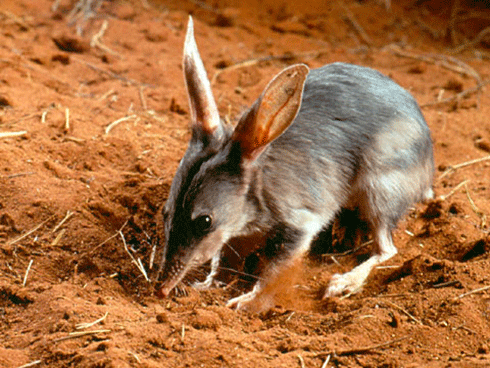
Mountain Pygmy Possum
The mountain pygmy possum is one of five living species of pygmy possum. This species is the largest of the pygmy possums and can be easily identified from the other possums by its unique “buzz saw” premolar teeth. Its fine but dense fur is mainly grey-brown with a pale cream underneath, it also has a dark ring of fur around its eyes and rounded ears.
The mountain pygmy is the only Australian mammal whose dispersion is restricted to alpine and sub-alpine regions. They live in the Kosciuszko National Park and the Alpine National Park in Victoria. The perfect habitat for these possums include deep boulder fields with high elevations, great availability of the Bogong Moth and other food sources such as seeds nearby.
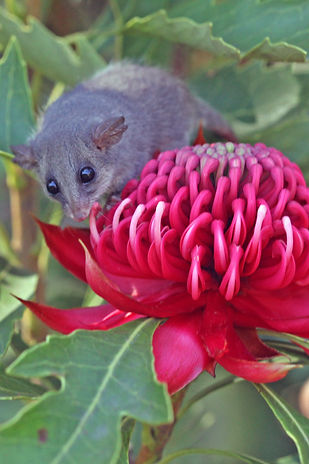
Threats to the Mountain Pygmy Possum
The biggest threats to the mountain pygmy possum include habitat destruction and fragmentation, climate change, predation by feral cats and red foxes, and threats to the Bogong moth. Only small sections of suitable mountain pygmy possum habitat remain. Up to one third of the best breeding habitat has been lost at Mount Buller due to ski resort expansions and developments.
Climate change poses a huge threat to the survival of the Mountain Pygmy Possum. In Australia, warmer winters are reducing snow depth, forcing mountain pygmy possums out of hibernation earlier than their prey, the Bogong moth, meaning that many are starving to death. In order to survive, the mountain pygmy possum then have to compete for food with other small mammals living in the same area. They are then forced to leave their home for other sources of food, only exposing them to feral cats and foxes. Although the Mountain Pygmy-possum is highly vulnerable to extinction, they can be saved.
A discovery was made of a new population of Mountain Pygmy-possums in Kosciuszko National Park. These possums live below the tree line, in an area that receives little snow fall. They may play a key role in understanding how this species will adapt to future challenges.
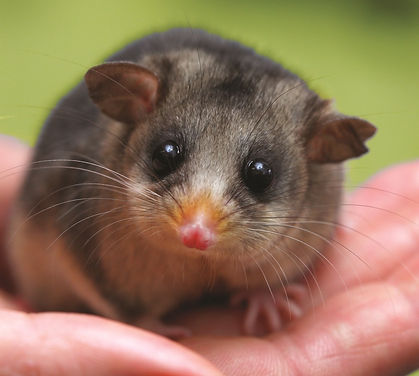
The Slender Darling Pea
The Slender Darling Pea or the Smooth Darling Pea (Swainsona galegifolia) is a native Australian plant that is found throughout New South Wales. It specifically grows in leftover native grasslands or
grassy woodlands that have been occasionally grazed
or refined; they bloom heavily and carpet the
landscape when cool-season rains occur. The Slender
Darling Pea is a sparsely-downy forb with greyish,
tapered and thin, stiffly leathery pods and the pea-like
flowers are magenta with red stripes on densely and
darkly hairy, slender stalks.
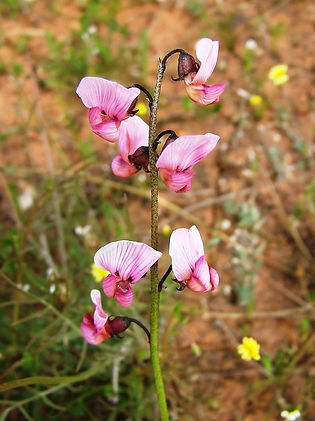
Threats to the Slender Darling Pea
The slender darling pea grows in agricultural paddocks and can still thrive in paddocks that have been moderately or occasionally refined. However, heavy grazing, mainly during the flowering and
fruit season may disturb the soil seed bank and
therefore threaten the future of the species.
The slender darling pea faces other multiple
threats such as: the loss of grassland habitat due
to cultivation, urban development and human impact, the invasion of exotic plant species, increased salinization, frequent fires, and animal grazing the area.
Solutions- how to preserve the slender darling pea:
To conserve the slender darling pea, you can commit to actions that support the plant; you can conduct surveys and petitions during the flowering season before any suggested development. Where grazing must be occurred in a paddock, ensure that it is to be light and intermittent
